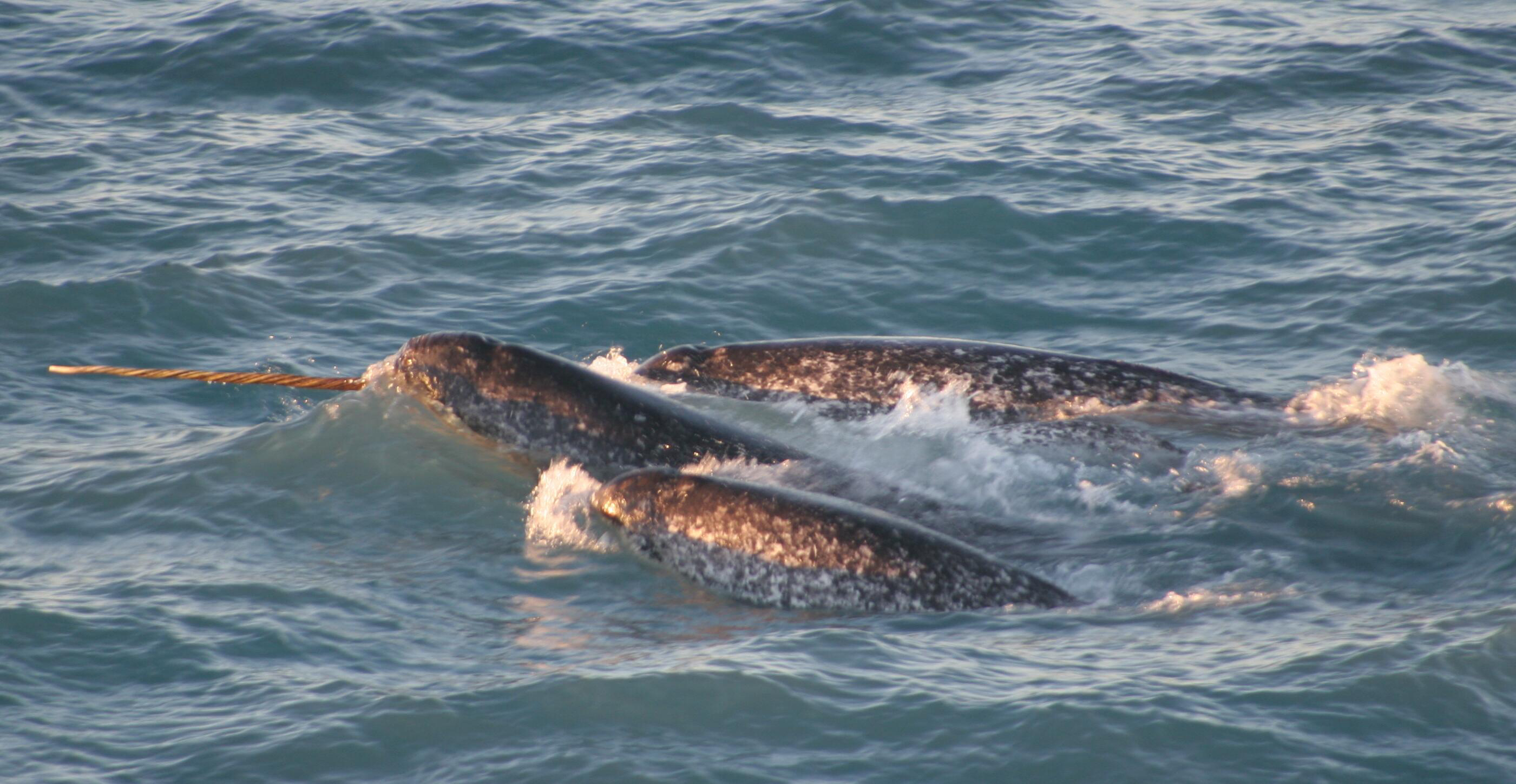Translations:AY Honors/Cetaceans/Answer Key/34/en
Beluga Whale (Delphinapterus leucas)
Where found: Arctic and sub-arctic oceans around North America, Russia and Greenland.
Description: Adapted to life in the Arctic, it has a number of anatomical and physiological characteristics that differentiate it from other cetaceans. The unmistakable all-white colour, absence of a dorsal fin, and the distinctive protuberance at the front of its head which houses an echolocation organ called the melon. The beluga’s body size is between that of a dolphin’s and a true whale’s, with males growing up to 5.5 m (18 ft) long and weighing up to 1,600 kg (3,500 lb). This whale has a stocky body; it has the greatest percentage of blubber. Its sense of hearing is highly developed and it possesses echolocation, which allows it to move about and find blowholes under sheet ice. Belugas form groups of up to 10 animals on average, although during the summer months, they can gather in the hundreds or even thousands in estuaries and shallow coastal areas. They are slow swimmers, but they can dive down to 700 m (2,300 ft) below the surface. They are opportunistic feeders and their diets vary according to their locations and the season. They mainly eat fish, crustaceans and other deep-sea invertebrates. Worldwide population is thought be around 150,000 individuals. They are migratory and the majority of groups spend the winter around the arctic ice cap; but when the sea ice melts in summer, they move to warmer river estuaries and coastal areas. Belugas are one of the cetaceans most commonly kept in captivity in aquaria and wildlife parks in North America, Europe and Asia where they are popular with the public due to their colour and expressivity. Wilma the Beluga Whale
Narwhal (Monodon monoceros)
Where found: Arctic and sub-arctic oceans around North America, Russia and Greenland.
Description: Adapted to life in the Arctic, Narwhale Nat Geo. These small whales have a long tusk (actually an elongated left canine tooth) protruding from the mouth. They eat fish which they hunt beneath the pack ice of arctic waters. Thy do not have a dorsal fin as most whales and dolphins do. Narwhals range from 4 to 5.5 meters (13-18 feet) in length.


